Tesla has major brand awareness in the solar industry, but when it comes to the company’s building-applied “solar roof,” results are essentially nonexistent. Tesla CEO Elon Musk first announced a “beautiful, affordable and seamlessly integrated” solar roof product in 2016, but successful application hasn’t expanded past a few pilot installations. Last Friday though, Tesla announced its “third” generation of the elusive product.
This latest iteration consists of bigger tiles and a massive price drop, with Tesla now claiming that its Solar Roof “provides the lowest cost per watt of any national solar panel provider and is comparable in price to a typical roof with solar panels.” The product also only appears to come in a black-glass version, and there is no mention of the slate and clay roof tiles that Musk unveiled on a Hollywood set three years ago.
The Tesla Solar Roof version installed immediately before this new announcement allegedly consisted of 14 in. x 8.5 in. tiles of tempered glass with solar cells hidden behind. Each tile’s power output was never explicitly made public.
This third version of the Solar Roof has 15 in. x 45 in. tiles that come with a tile, power and weatherization warranty of 25 years. Still no estimated power output for each tile.
On an online order form, the estimated pricing for an average home with a 2,000-sq-ft roof and 10 kW of solar is $33,950 with the Solar Roof and $43,790 for a new concrete tile roof with traditional solar panels (the roof is estimated at $23,840 while the solar panels are $19,950). Both roof estimates take into account a 30% ITC already.
Musk said during a Q&A that Tesla is taking orders now but production is still ramping up at its manufacturing plant in Buffalo, New York, that it shares with Panasonic. Eventually, Musk wants 1,000 Solar Roofs produced each week.
The building-applied PV product category — which includes solar shingles, solar tiles and solar roofs — has been around for years with varying success. Companies like CertainTeed and SunTegra produce small solar panels that are installed among traditional asphalt shingles or tiles. Other manufacturers like DeSol Power Tiles and Luma Solar design custom solar roofs, where solarized sections of a roof are installed beside non-solar generating components. In both these areas, the solar sections of the roof are visible but they blend more than traditional rack-mounted solar panels. Tesla’s proposed solar roof product would make distinguishing the solar tiles from the dummy tiles less obvious.
Read more about the latest on solar shingles, solar roofs and solar tiles here.

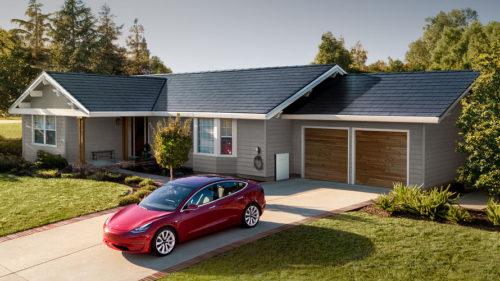
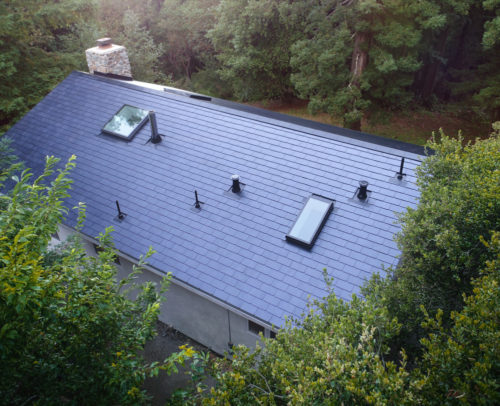
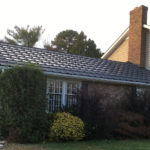


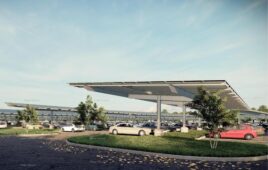
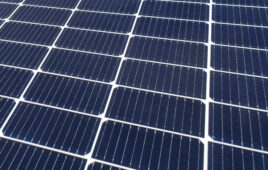
Elon is the most innovative and disruptive CEO/inventor in history and will succeed at roofs also. Consider #1 EV, #1 Li Ion battery mfr, #1 space launch vehicle, #1 autonomous driving and soon to be #1 in insurance and many other areas.
Not considered is the cost of backup generator to cover for power failures and return on Elon’s Auto Bidder where you can sell you power on the open market when consumption peaks and then buy it back for next to nothing when grid power peaks well over demand.
I am hoping Tesla can integrate weatherization on the home to reduce energy requirements with added benefit of making the home safer, more comfortable, healthier and longer lasting (reducing moisture problems.) Building performance Institute has been developing these method and training contractors on how to do this for decades These services must be added to increase the power available from individual solar so that Elon’s distributed mega grid and perform better.
I wouldn’t want to be another guinea pig for Tesla Shingles. Can you walk on them? doubt it. What happens when one little panel has a problem? The workers have to walk on them to get there! It’s a good idea, but….why not make different colors?
I think rooftops are a waste of effort.. I prefer community solars.. Towns have to start owning up to the fact that they have to have community solars ! I prefer megawatts over kilowatts.. Small contractors make too many trips to do a small contract as compared to community solars that are bigger and can easily be hooked up to the local powerline from the substation bypassing the utility.. Towns do not need to be paid by utitlies as community solars are community owned.. PG&E shut down many towns and the towns are vulnerable themselves and the residents rushed out to buy polluting generators.. What a mess!
as stupid as it gets… Governor Newsom is to be blamed .. not PG&E.. Governor Newsom need to be educated about community solars.. as the best answer to distributed energy!!! not rooftops..